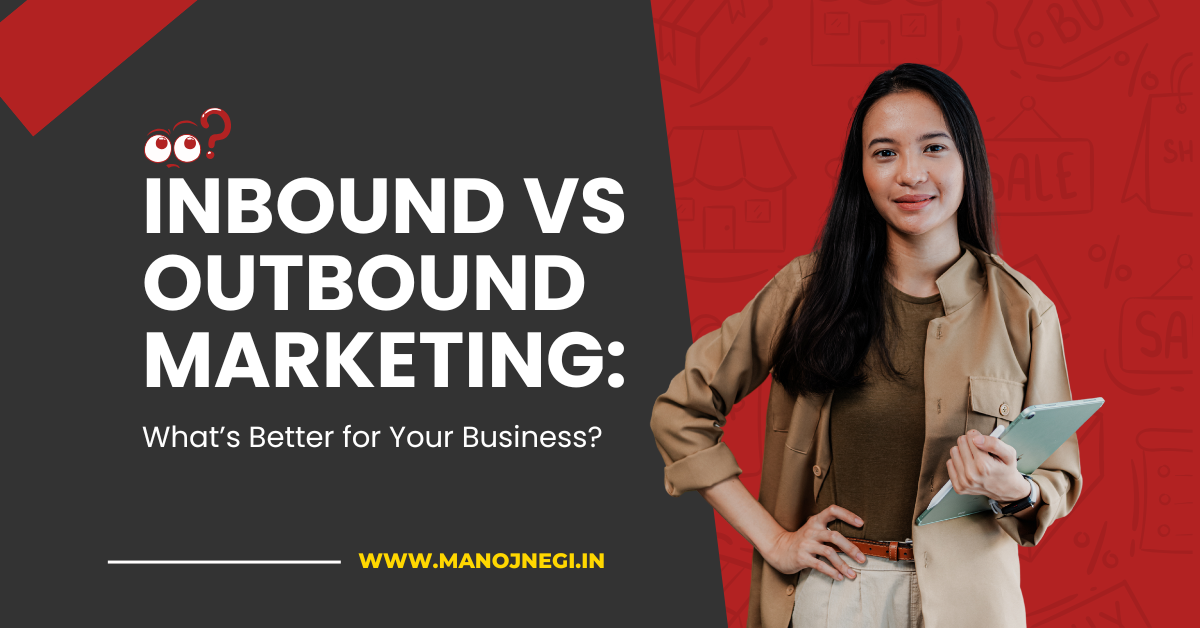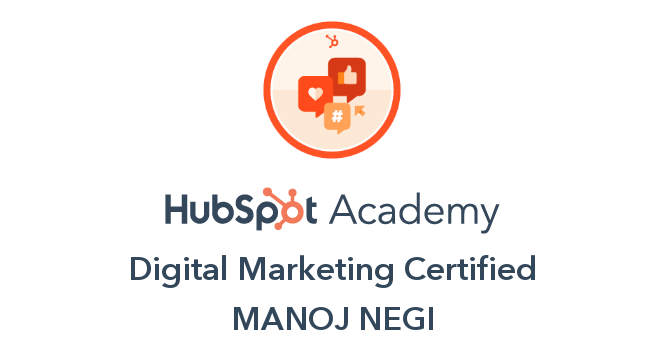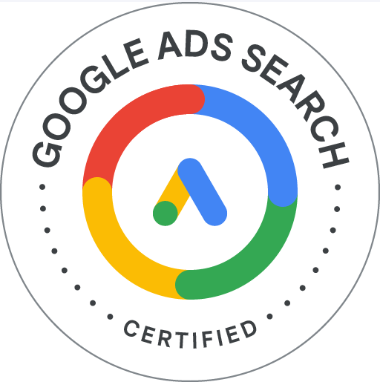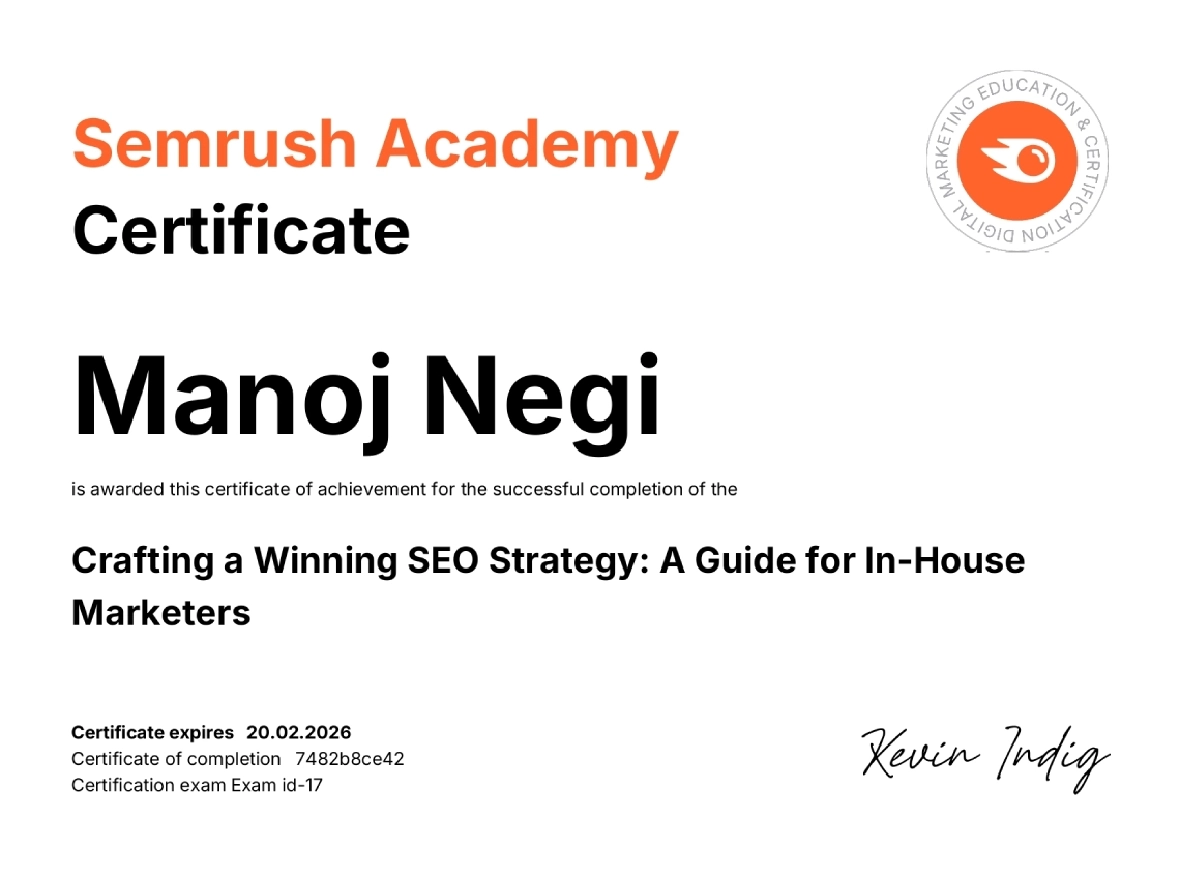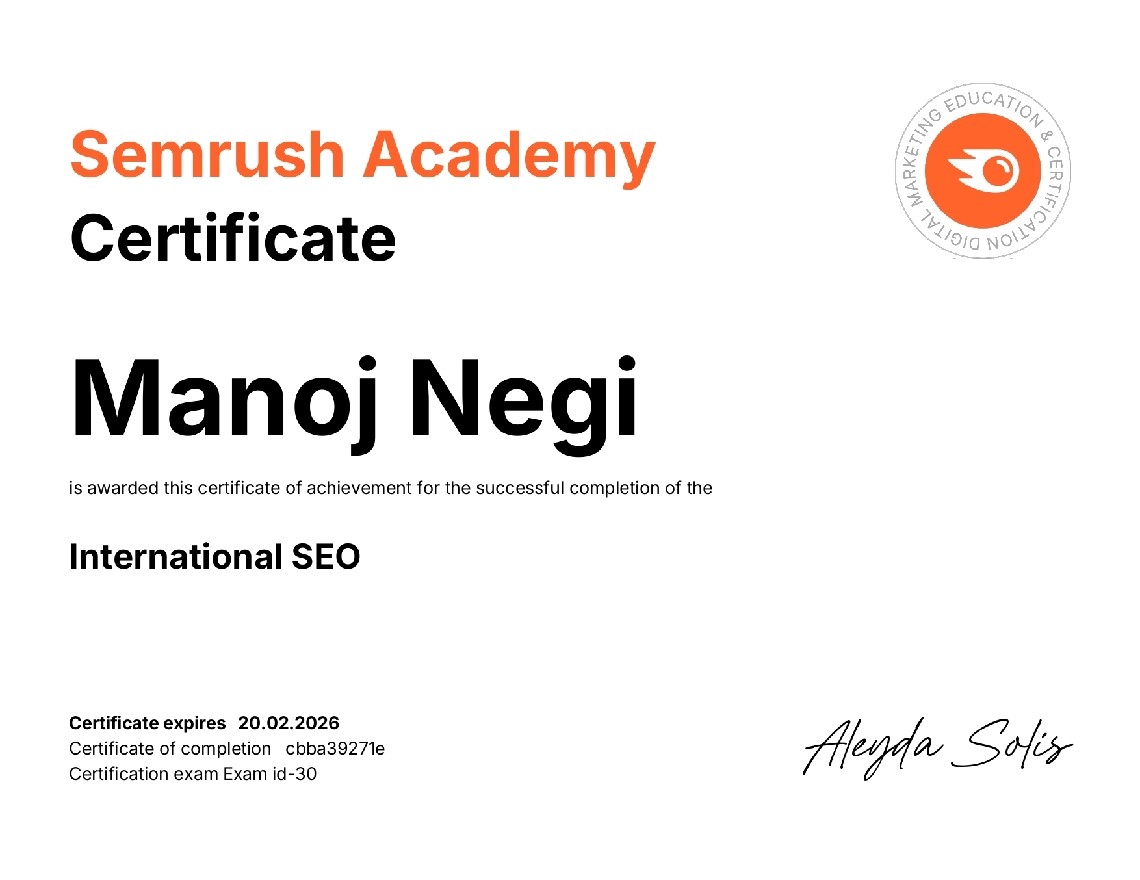When it comes to marketing, businesses face a dilemma: which direction should they take? Whether they should opt for inbound marketing, prefer outbound marketing, or go for both.
Well, the confusion is real. Both forms of marketing have their pros and cons. It is important to consider those and smartly decide which one is better.
In this post, we will have a detailed look at inbound vs outbound marketing, while making things easy for you to decide which one is better for your business.
Both forms of marketing aim at attracting customers and generating revenue. However, the approaches they use are different. This is what we have to look at to decide what’s better for your business: inbound marketing or outbound marketing.
Let us talk about both one by one.
Here we go!
What is Inbound Marketing?
Also known as the “pull” marketing strategy, inbound marketing is where you engage a target audience through tailored content and experiences. Here, you are not pushing your products/services to the customer, but rather making meaningful connections by delivering what they want.
The point with inbound marketing is very clear: think about your customers first, and they’ll come to you with trust. Eventually, buying your products/services.
Some of the best examples of inbound marketing include blog posts, social media content, SEO, product videos, webinars, email newsletters, and more.
What Are the Key Features of Inbound Marketing?
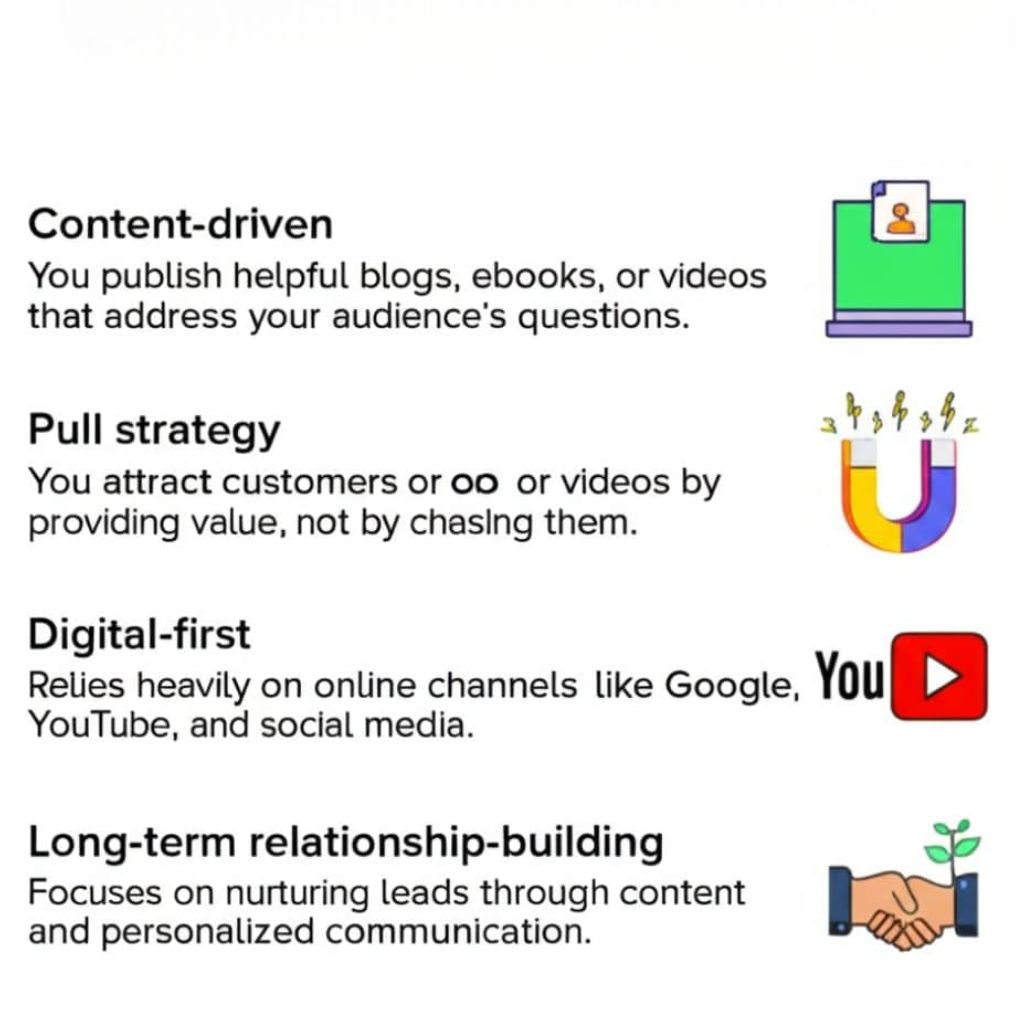
What Are the Challenges of Inbound Marketing?
With inbound marketing, you may encounter certain challenges:
- Takes time to gain traction
- Requires consistent content creation
- Needs solid SEO and social media knowledge
- ROI may feel slow at first
When Should You Use Inbound Marketing?
Inbound marketing is ideal when you want to:
- Build long-term brand trust
- Establish your business as a thought leader
- Generate warm leads who are more likely to convert
- Educate customers before a sale
- Have a limited budget but time to grow organically
For example, if you’re a SaaS company offering a niche productivity tool, inbound marketing can help you explain the tool’s benefits through videos, blogs, and webinars. People looking for solutions will find your content through search engines or social media and enter your funnel already informed.
HubSpot, the marketing software company, is a classic example of inbound done right. They built their entire brand through helpful content—blogs, free templates, webinars, and SEO-focused strategies. As a result, they attract millions of visitors every month without having to chase them with ads.
Their content not only generates leads but also educates them, making conversions smoother and more natural.
What is Outbound Marketing?
Outbound marketing focuses on the “push” marketing strategy. In simpler terms, we could say that outbound marketing is a traditional form of marketing where you just talk about your product to a large group of audience without identifying their needs and preferences. Like, you are just knocking on everyone’s door and explaining about your products/services.
The goal with outbound marketing is just to push your message, hoping someone will show interest and purchase what you are selling.
The modes of outbound marketing can be TV ads, radio spots, cold calling, print ads, display ads, and random email blasts.
What Are the Key Features of Outbound Marketing?
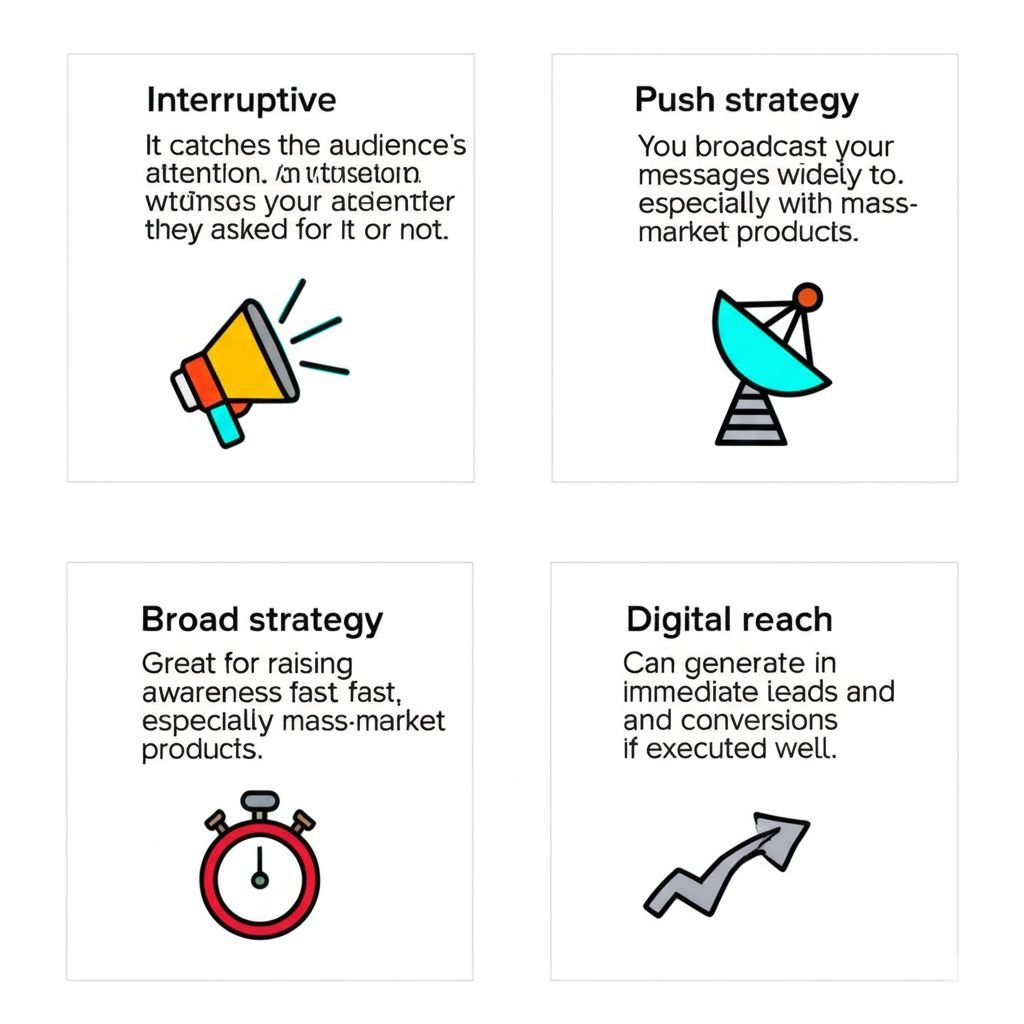
What Are the Challenges of Outbound Marketing?
Outbound marketing may pose certain challenges:
- Can be expensive
- Interruptive and less trusted
- Hard to track effectiveness if not digitally integrated
- Risk of being ignored or blocked
When Should You Use Outbound Marketing?
Outbound marketing works best when:
- You need fast results or want to launch a product quickly
- You’re targeting a mass audience with a broad offering
- You have a sizable marketing budget
- Brand awareness is a key objective
Think about big brands like Coca-Cola or Nike. They still invest heavily in outbound marketing—TV ads, billboards, and sponsorships—because they want to be everywhere and reach as many people as possible.
It also suits B2B companies that rely on cold emailing or calling decision-makers in other businesses, especially when inbound tactics may take too long.
Like with a startup launching a new smartphone. They need fast traction. They run aggressive TV ads, influencer partnerships, and YouTube pre-rolls. That’s outbound at work, creating awareness and curiosity in a short time frame.
Without these high-impact campaigns, their launch might go unnoticed in a crowded market.
Head-to-Head Comparison Between Inbound and Outbound Marketing
| Factor | Inbound Marketing | Outbound Marketing |
| Audience Engagement | Two-way communication, the audience comes to you | One-way communication, you reach out to the audience |
| Cost | Generally cost-effective | Can be expensive |
| Lead Quality | Usually higher | May be lower |
| Scalability | Scales well with automation and SEO | Scales through the budget |
| Speed of Result | Slow but long-lived | Fast but short-lived |
| Measurability | Highly measurable using analytics tools | Often harder to measure ROI precisely |
| Trust Factor | Builds brand authority over time | Can feel intrusive if not done tactfully |
Can You Use Both?
Now, the question that may come to your mind is, can’t you use both forms of marketing? The answer is yes; you can. That could be the best strategy, but you need to blend both forms in the right volume and method.
- Use inbound to create valuable content that educates and nurtures leads.
- Use outbound to amplify your reach and target new audiences quickly.
For example, if you have launched a new AI-integrated vacuum cleaner, you can create its strong market presence through TV or display ads (outbound marketing), whereas you should educate people by addressing their concerns through social media marketing, email newsletters, and articles.
So, weigh your goals. If you’re in it for the long haul, inbound is your friend. If you need quick visibility or sales, outbound will deliver. Ideally, use both smartly.
Final Thoughts: What’s Better for Your Business?
The better strategy depends on your industry, goals, budget, and customer behavior.
- If you sell complex B2B services or want to build authority over time, inbound is your go-to.
- If you’re launching a consumer product or need fast visibility, outbound can give you the spark you need.
- If you’re serious about growth, combine both and let them support each other.
Marketing isn’t about choosing sides; it’s about choosing what works for your audience.
In the end, it’s not inbound vs. outbound. It’s how you strategically balance both to create a winning marketing ecosystem for your business.

